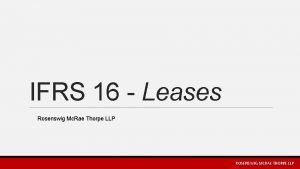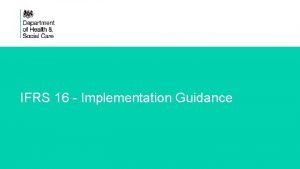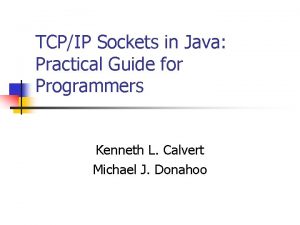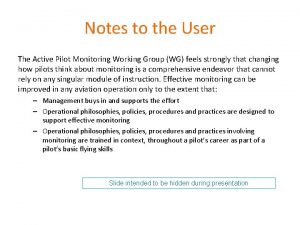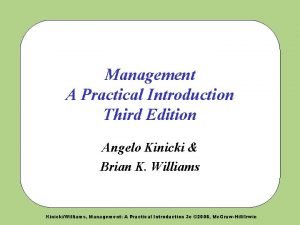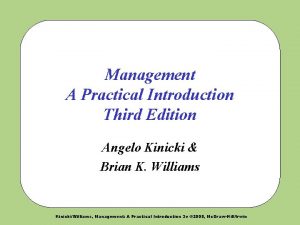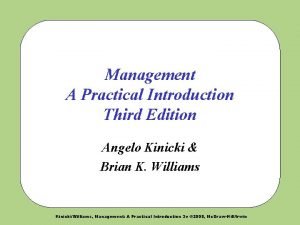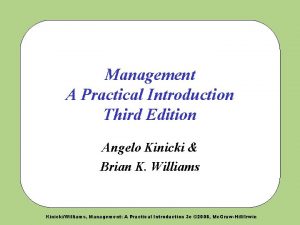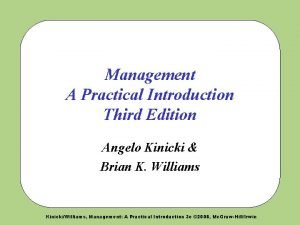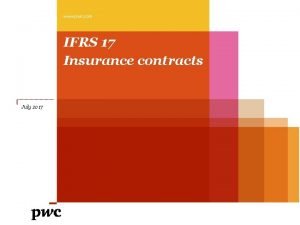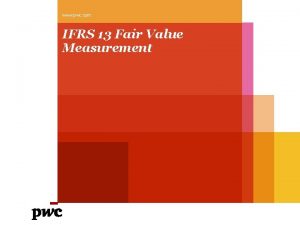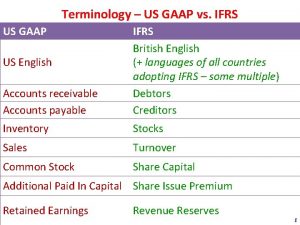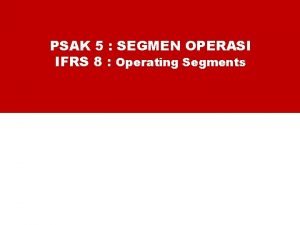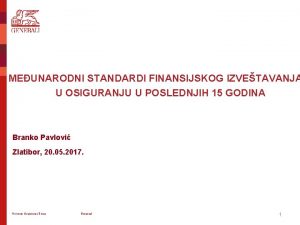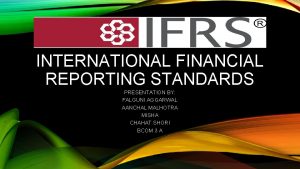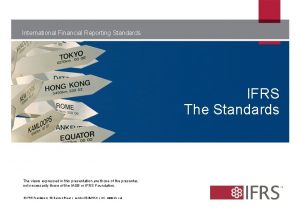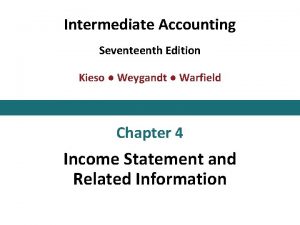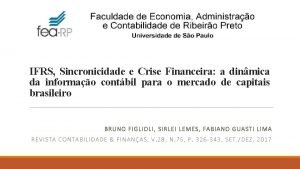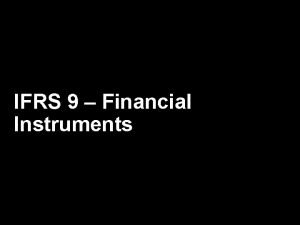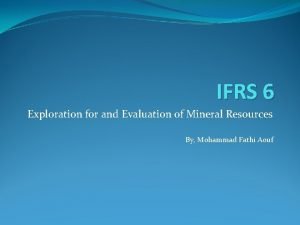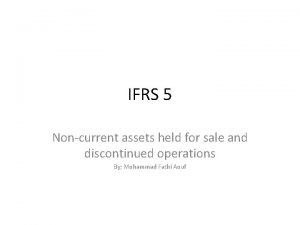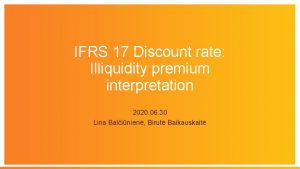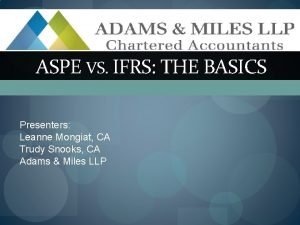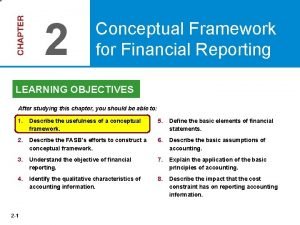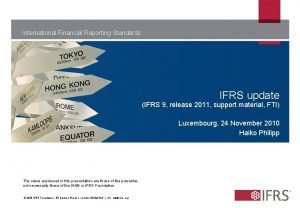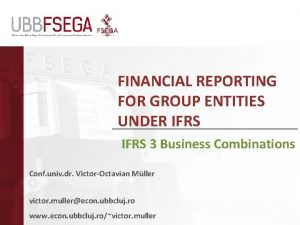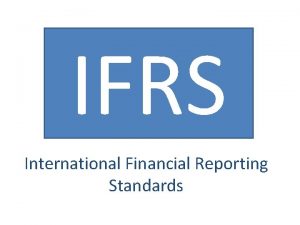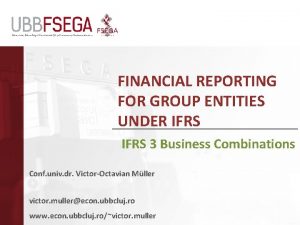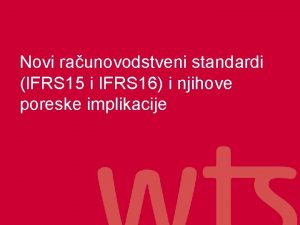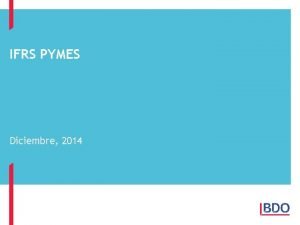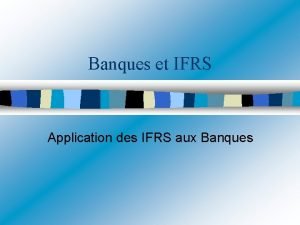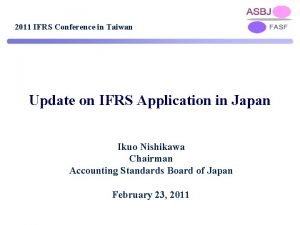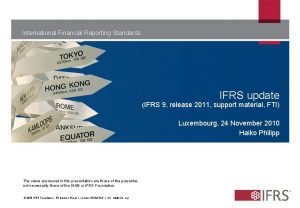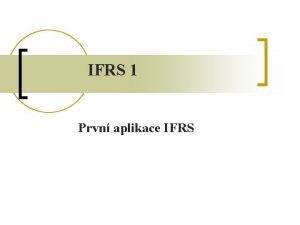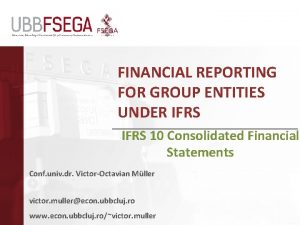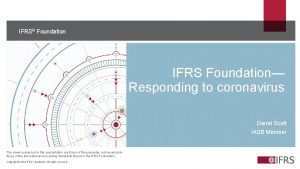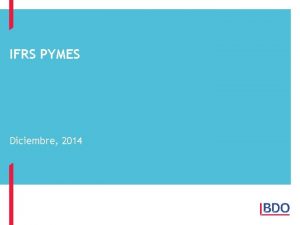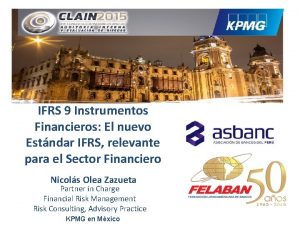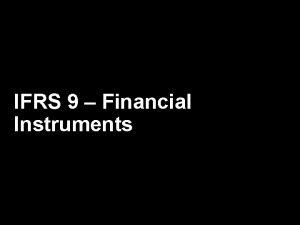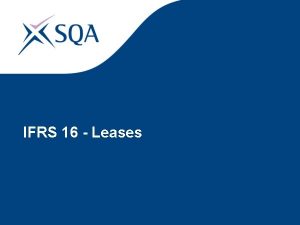Introduction to IFRS A Practical Guide Rosenswig Mc


























- Slides: 26

Introduction to IFRS – A Practical Guide Rosenswig Mc. Rae Thorpe LLP


Why IFRS? Parent company requires IFRS Regulatory requirements � Registered entities with the OSC (i. e. fund managers) � Listed entities (public companies) Stipulated by material agreements Anticipation of reporting under IFRS in future

Why IFRS? – RMT examples CHC Student Housing LP, RESCO MIC � Early transition to IFRS due to anticipation of investor need Tera (mutual fund), Glen Union Capital / LP � OSC regulatory requirement Eastcom � IFRS QC review

Preface The intention of this presentation is to highlight some areas that you should be aware of when working on IFRS statements. This presentation is not meant to cover any areas in great detail and it is recommended that you review the relevant sections in detail when working on IFRS engagements.

Key Differences – Balance Sheet Statement of Financial Position Investment properties (IAS 40) Revaluation model for PPE (IAS 16) Agriculture (IAS 41) Impairment of assets (IAS 36) Deferred tax (IAS 12) Future difference: Leases (IFRS 16)

Key Differences – Balance Sheet Investment properties (IAS 40) Meant for revenue-producing properties, including assets under lease but excluding biological assets and mineral reserves Measured at fair value; no amortization External valuation is not required, but highly encouraged

Key Differences – Balance Sheet Investment properties (IAS 40)

Key Differences – Balance Sheet Investment properties (IAS 40)

Key Differences – Balance Sheet Investment properties (IAS 40)

Key Differences – Income Statement of Comprehensive Income Revenue recognition � Specific standard for Construction Contracts (IAS 11) � New encompassing standard (IFRS 15) effective Jan 1, 2018 Income taxes (IAS 12) Equity issuance costs (IAS 39)

Key Differences – Income Statement Income taxes This is a very simplified example!

Key Differences – Notes Note 1 Accounting policies Financial instruments (IAS 39, IAS 32, IFRS 9; IFRS 9 to replace IAS 39) Fair value measurement (IFRS 13) Disclosure of upcoming IFRS standards Transition to IFRS (IFRS 1)

Key Differences – Notes Note 1 and accounting policies

Key Differences – Notes Financial instruments � Usually a note within accounting policies

Key Differences – Notes Financial instruments

Key Differences – Notes Fair value

Key Differences – Notes Fair value

Key Differences – Notes Upcoming IFRS standards � At the end of accounting policy note

Key Differences – Notes Upcoming IFRS standards � At the end of accounting policy note

Key Differences – Notes Transition to IFRS

Key Differences – Notes Transition to IFRS

Key Differences – Notes Transition to IFRS

Key Differences – Notes Transition to IFRS

RMT Learning Points Always check the Standard; don’t assume accounting treatment is the same! Use disclosure requirements in IFRS standards as disclosure checklists. Think of client need and simplify note disclosures where possible. Be proactive in helping a client think through the IFRS vs. ASPE decision.

Questions?
 Ifrs 16 sales and leaseback
Ifrs 16 sales and leaseback Ifrs 16 implementation guide
Ifrs 16 implementation guide Tcp/ip sockets in java: practical guide for programmers
Tcp/ip sockets in java: practical guide for programmers Empire 8284
Empire 8284 Kids' athletics programme
Kids' athletics programme Angelo kinicki management: a practical introduction
Angelo kinicki management: a practical introduction Read management: a practical introduction
Read management: a practical introduction Practical research
Practical research Management a practical introduction
Management a practical introduction Management a practical introduction 3e
Management a practical introduction 3e Kinicki: management: a practical introduction 3rd edition
Kinicki: management: a practical introduction 3rd edition Ifrs 17 effective date
Ifrs 17 effective date Pwc hierarchy
Pwc hierarchy What is gaap in accounting
What is gaap in accounting Ifrs 8 operating segments example
Ifrs 8 operating segments example Ifrs 17 osiguranje
Ifrs 17 osiguranje Ifrs meaning
Ifrs meaning Ifrs 2
Ifrs 2 Retained earnings ifrs
Retained earnings ifrs Modle ifrs
Modle ifrs Financial assets ifrs
Financial assets ifrs Ifrs 6
Ifrs 6 Scope of ifrs 5
Scope of ifrs 5 Ifrs discount rate
Ifrs discount rate Revenue minus expenses equals
Revenue minus expenses equals Aspe ifrs
Aspe ifrs Objectives of conceptual framework
Objectives of conceptual framework
